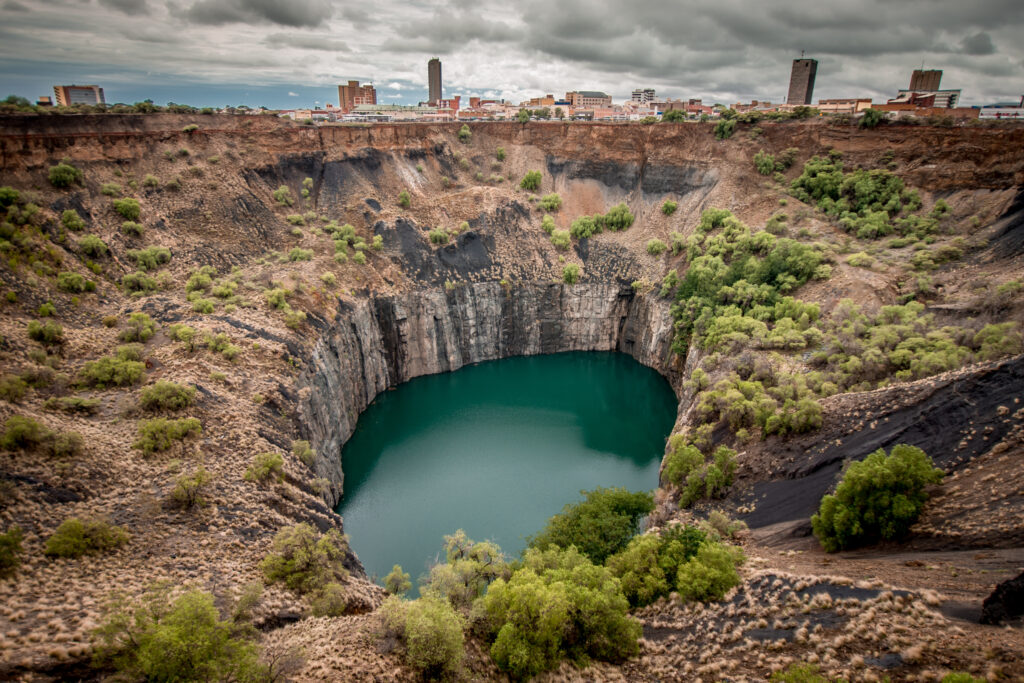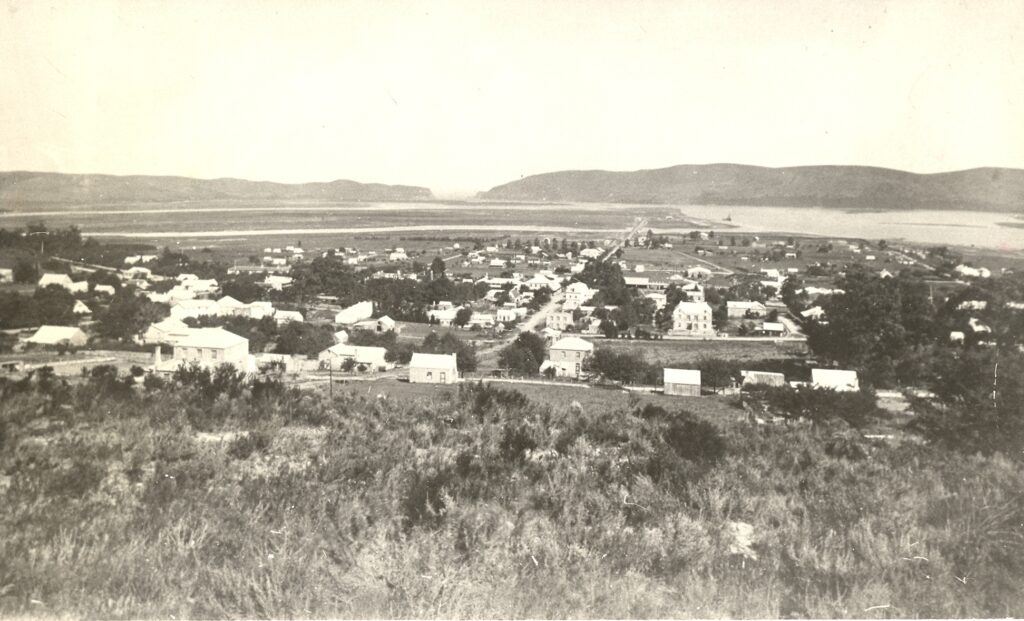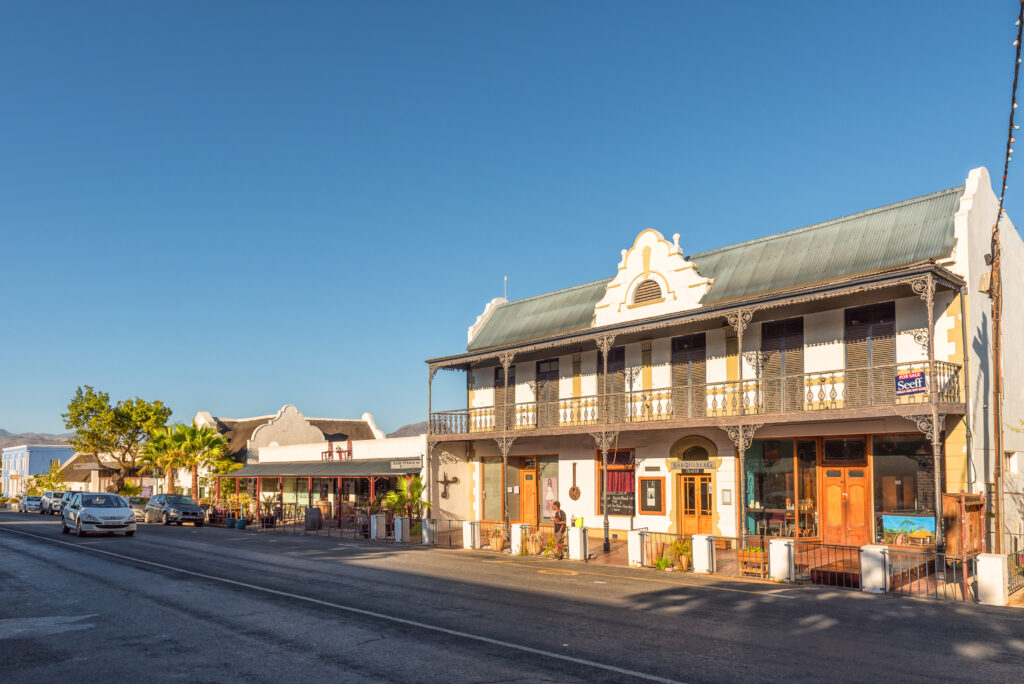Made in SA
Steeped In History And Tradition
Tulbagh in the valley of abundance
Tulbagh was discovered in 1658 by Pieter Potter, surveyor general to Jan van Riebeek and named after Dutch Cape Colony Governor Ryk Tulbagh.
Favourably situated in a picturesque environment on a coastal plateau between the Outeniqua Mountains and the Indian Ocean, Tulbagh and its surrounding areas are blessed with a temperate climate all year.
Cape Dutch architecture dominates the historic Church Street, while the town also features Victorian-style houses and five museums, enabling the visitor to time travel over 300 years.
Church Street and the Tulbagh Wine Route are among the town’s biggest claims to fame. Tulbagh’s accolade-crowned wine route boasts gracious historic estates interspersed with state-of-the-art contemporary cellars and boutique wineries.
To fully experience the town’s rich heritage, visitors should not miss seeing the Oude Kerk Volksmuseum and annexes and the De Oude Drostdy Museum, which is situated a few kilometres out of town.
Visitors can participate in several interesting activities, including a scenic tractor ride up the Oudekloof Mountain to take in the amazing views of the surrounding area from the top of the mountain, bird watching, hiking, biking, fishing, horse riding and zip lining. There are also galleries, gift shops and the Tarzan shoe factory as well as an animal rehabilitation sanctuary, where one can feed the animals and relax in the beautiful gardens.
Information supplied by Patty Nieuwoudt, CEO Tulbagh Tourism & Tulbagh Wine Route.
Home of the big hole

Kimberley was founded in 1871 when diamond deposits found on a hillock dubbed Colesberg Kopje, on the farm Vooruitzicht, owned by the De Beer brothers, led to an influx of determined prospectors searching for fame and wealth. So desperate to find fortune, they hand-dug the colossal Kimberley Mine, now better known as The Big Hole.
By 1872, the tents and shacks of more than 50 000 feverish diggers crowded what was then known as the mining town of New Rush, surrounding the hillock. Spacious homes began to rise from the dust and, in 1873, the town was renamed Kimberley, after the Earl of Kimberley, British Secretary of State for the Colonies.
The town boasts many traces of the past in its architectural heritage, including:
Canteen Kopje is an earlier stone age archaeological site with open-air displays and a historical walk around the geology, archaeology, and diamond diggings of the area. Two of the world’s largest hand-axes were found here.
A cenotaph, designed by architect and painter William Timlin, was erected to commemorate the 400 Kimberley men who fell in World War I.
The Big Hole, Kimberley’s most famous landmark and “must-see tourist attraction”, now has a new exhibition centre, viewing platform, and a reconstruction of the “Old Town”.
Adjacent to the Big Hole is the Kimberley Mine Museum, which depicts life in the city during the frenetic days of the diamond rush. A guided underground tour (some 840m beneath the earth’s surface) of the De Beers diamond mine makes for a fascinating experience.
The historical city centre is full of monuments, museums, and art galleries, many of which can be found inside some of the stunning old Victorian homes. The Town Hall is a stunning example of late 18th-century architecture.
The site of the Battle of Magersfontein, just 30km from the city, has an observation point with good views of the battlefield and the trenches.
Information supplied by Ntombi Mtai, tourism officer, Sol Plaatje Municipality.
A natural paradise

World-renowned today, the town of Knysna was founded in 1804 by George Rex, thought to be the illegitimate son of King George III, who settled his family on the shores of the Knysna Lagoon. The land was covered in indigenous forests, which saw the rise of Knysna’s famous timber trade. The name Knysna stems from the Khoikhoi word naizna, meaning ferns.
The town houses the largest Rastafari community in South Africa: the Judah Square Rastafarian “one love” community are considered the friendliest, most welcoming and accepting religious culture you are likely to encounter.
The town is famous for its tranquil lakes, golden beaches, fine indigenous timbers, and also for the artistry of its furniture and timber products, not to mention its oysters, loerie (tauraco) birds, seahorses (hippocampus capensis), and indigenous Knysna forests.
Information supplied by Thozeka Sikali, Knysna Tourism information officer.
A natural paradise

World-renowned today, the town of Knysna was founded in 1804 by George Rex, thought to be the illegitimate son of King George III, who settled his family on the shores of the Knysna Lagoon. The land was covered in indigenous forests, which saw the rise of Knysna’s famous timber trade. The name Knysna stems from the Khoikhoi word naizna, meaning ferns.
The town houses the largest Rastafari community in South Africa: the Judah Square Rastafarian “one love” community are considered the friendliest, most welcoming and accepting religious culture you are likely to encounter.
The town is famous for its tranquil lakes, golden beaches, fine indigenous timbers, and also for the artistry of its furniture and timber products, not to mention its oysters, loerie (tauraco) birds, seahorses (hippocampus capensis), and indigenous Knysna forests.
Information supplied by Thozeka Sikali, Knysna Tourism information officer.
From woodcutter outpost to flourishing town

The town of George was founded because of the Outeniqua forest that surrounds it. In 1776, the Dutch East India Company established a woodcutter outpost on the site. It became known as George in 1811, when the British, who had assumed control of the Cape Colony, established it as a separate district of Drostdy.
George is the sixth oldest town in South Africa and was the first South African town founded under British rule, which is why it was named after the reigning monarch, King George III.
The town’s first museum was established in 1967. Renovated in 1992, it has an outdoor complex consisting of plantings of fynbos and forest trees, as well as exhibition halls and original yellowwood buildings, the focal point of the museum’s main theme.
The George Tourism Bureau building is considered to be the best example of Edwardian architecture in George. It was designed by Charles Bullock of Oudtshoorn in the Neo-renaissance style. The Tourist Information Office is now situated in this building.
Among the town’s major attractions are:
The Old Oak Tree is one of the town’s most famous landmarks. This 200-year-old oak tree has an old iron chain embedded in its trunk with the remains of a heavy lock attached to it.
St Peter and St Paul is the oldest existing Roman Catholic church in South Africa.
The Outeniqua Railway Museum is the only national railway museum in SA that boasts old locomotives, coaches, and road transport items on display.
Information supplied by Caydyn Louis, intern information officer, George Tourism.






 Sign-up and receive the Business Media MAGS newsletter OR SA Mining newsletter straight to your inbox.
Sign-up and receive the Business Media MAGS newsletter OR SA Mining newsletter straight to your inbox.